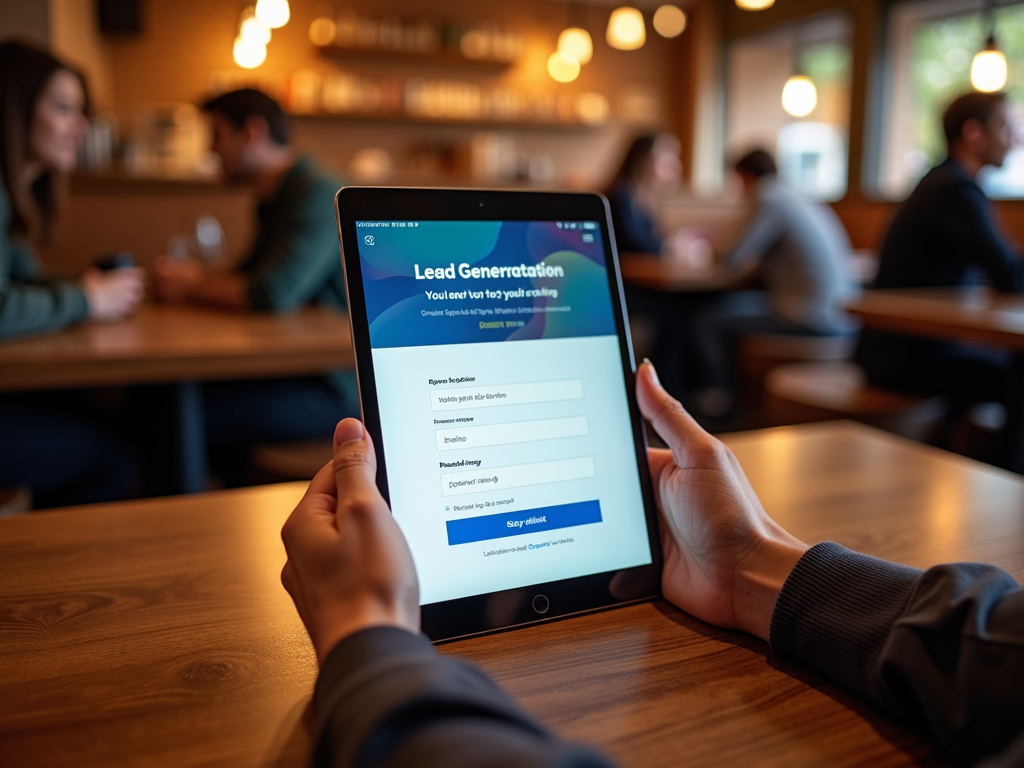In the ever-evolving landscape of digital marketing, the art of capturing potential customers’ information effectively stands at the forefront. The crux of lifting conversion rates often stems from simple yet powerful tools known as lead generation forms. By magic, these forms can transform a casual visitor into a valuable lead, paving the way for more significant business outcomes. Businesses that master the mechanics of these forms often witness considerable growth in their customer base and engagement. Utilizing various types of lead generation forms correctly can enhance the user experience while systematically gathering data. Let’s delve deeper into understanding these forms and how they could become the cornerstone of your digital strategy.
Understanding Lead Generation Forms

Lead generation forms are digital forms designed specifically to collect information from potential customers. Primarily found on websites, they act as your first point of interaction with visitors. Their purpose is to capture critical customer information such as names, email addresses, and sometimes even demographics or preferences. Different types of lead generation forms exist, ranging from simple email signup forms to complex surveys and pop-ups that engage users in various ways. Each type addresses distinct marketing needs and can cater to diverse audiences. By employing these forms strategically, businesses can tailor their approach to better meet their marketing goals.
Characteristics of Effective Lead Generation Forms

When crafting a lead generation form, several key characteristics can significantly impact its effectiveness. Simplicity is paramount—forms that are easy to fill out have higher conversion rates as they reduce user friction. A user-friendly design ensures that potential leads can quickly understand what is being asked without feeling overwhelmed. Moreover, having a compelling call-to-action (CTA) can entice users to submit their information. Visitors should know what they are signing up for, whether it’s exclusive content, a free trial, or a discount. Clarity in presenting benefits strengthens the formula for encouraging conversions.
Visual design plays a pivotal role in the effectiveness of lead generation forms. The choice of colors, typography, and layout can influence user behaviors significantly. Colors not only catch the eye but also evoke emotions; for instance, blue often conveys trust while green can indicate growth. Consistency in design across various touchpoints reinforces brand familiarity and reliability. Additionally, incorporating images or icons can make the forms more inviting. By emphasizing crucial elements, you can guide users toward completing the form without distractions.
21 Examples of Lead Generation Forms
Here’s a curated collection of effective lead generation form examples. This selection spans multiple industries and includes innovative techniques that have proven successful.
| Form Type | Industry | Features |
|---|---|---|
| Simple Email Signup | E-commerce | Minimal fields, clear benefits, visually appealing design. |
| Interactive Quiz | Education | Engaging content, personalized results, lead nurturing follow-up. |
| Free Trial Signup | SaaS | Immediate access, clear value proposition, minimal commitment. |
| Survey with Incentive | Market Research | Participants receive discounts, understanding needs better. |
Additional examples include the following types:
- Multi-step forms that break down the process into manageable parts.
- Customized landing page forms tailored to specific campaigns.
- Pop-up forms that appear during specific user interactions.
By exploring these examples, businesses can identify methods that resonate with their audience, which is essential for crafting effective lead generation strategies.
Best Practices for Optimizing Lead Generation Forms
Optimizing lead generation forms is crucial for driving increased conversions. Start with prioritizing aspects such as speed and mobile responsiveness; ensure that the forms load quickly and display correctly on mobile devices. A/B testing can provide insights into which form variations are more effective at driving sign-ups. Moreover, incorporate analytics to monitor the performance of each form. Analyzing metrics such as conversion rates, drop-off points, and user interactions can unveil areas needing improvement. Regularly revisiting and refining these aspects can lead to continued growth in lead generation.
As smartphone usage continues to dominate online interactions, the necessity for mobile-optimized forms cannot be overstated. Forms that are user-friendly on mobile devices may significantly improve conversion rates. The layout should be simple, with touch-friendly elements that make filling out forms a breeze. The synergy between user experience and conversion rates emphasizes a critical point; neglecting mobile users can lead to missed opportunities.
Tools and Software for Creating Lead Generation Forms
To effortlessly create lead generation forms, utilizing specialized tools can be a game-changer. These tools often provide templates, analytics, and integration with marketing platforms. Some popular options include:
- Typeform: Known for its user-friendly interface and engaging designs.
- Google Forms: A straightforward option for basic lead collection.
- HubSpot: Offers comprehensive marketing solutions along with form-building features.
Using these tools not only enhances functionality but also simplifies the process of tracking and analyzing user engagement.
Case Studies: Success Stories with Lead Generation Forms
Numerous businesses have witnessed transformation due to implementing effective lead generation forms. For instance, Company A improved its sign-up rate by 30% after redesigning its email signup form to include a more compelling call-to-action and a value proposition. Meanwhile, Company B saw a dramatic uptick in leads by introducing an interactive quiz, engaging users and prompting them to share contact information for personalized results. These case studies highlight how small changes in strategy can lead to significant results in lead conversions.
Conclusion
Incorporating well-designed lead generation forms into your marketing strategy is essential for maximizing conversion rates. Understanding the elements that make these forms effective, combined with practical examples, can guide businesses in creating their templates. From simplicity to visual appeal, each characteristic plays a vital role in collecting leads. As digital marketing continues to evolve, embracing innovative methods and testing new tools will keep you ahead. We encourage businesses to experiment with different styles while remaining tuned in to the preferences and behaviors of their target audience.
Frequently Asked Questions
- What is a lead generation form? A lead generation form is a tool used to collect information from potential customers, typically capturing details like names and email addresses to facilitate follow-up communications.
- How can I make my lead generation form more effective? Focus on clarity, simplicity, engaging calls-to-action, and ensuring mobile-friendliness.
- What kind of information should I ask for in my lead generation form? Aim for minimalism: typically ask for essential details like name and email; consider if other information is critical for your offerings.
- Are pop-up forms effective for lead generation? Yes, when used correctly, pop-up forms can capture attention and increase sign-ups, but they should not be overly intrusive.
- How do I measure the effectiveness of my lead generation forms? Use analytics tools to monitor conversion rates, track user interactions, and conduct A/B tests for continuous improvement.
- What are some common mistakes to avoid with lead generation forms? Avoid lengthy forms, unclear benefits, lack of responsive design, and aggressive sales tactics.